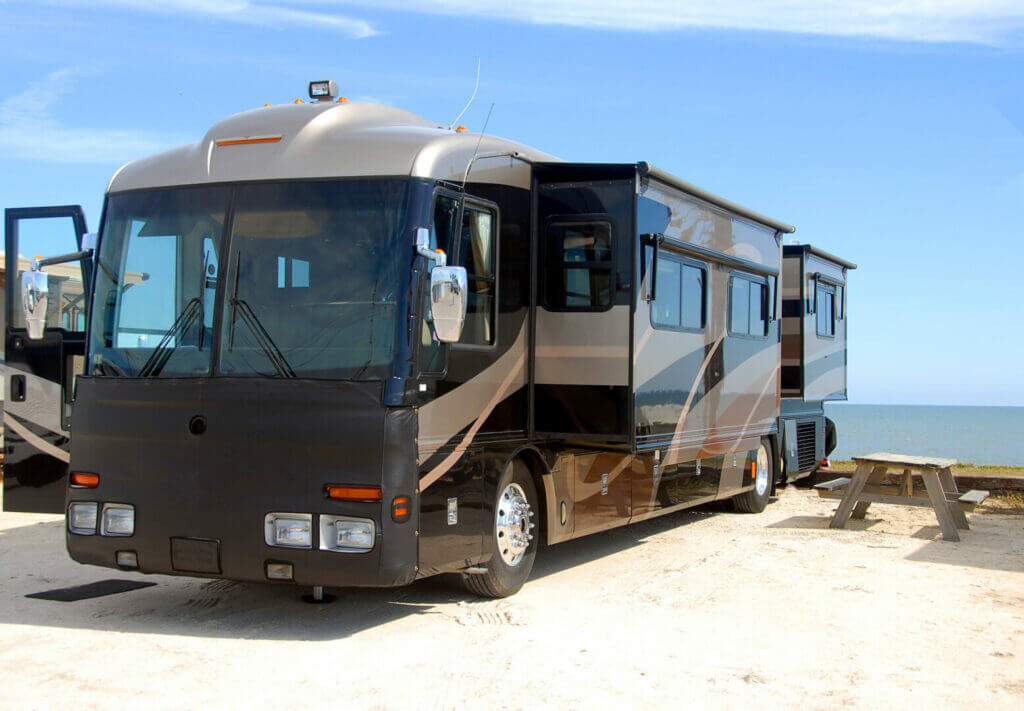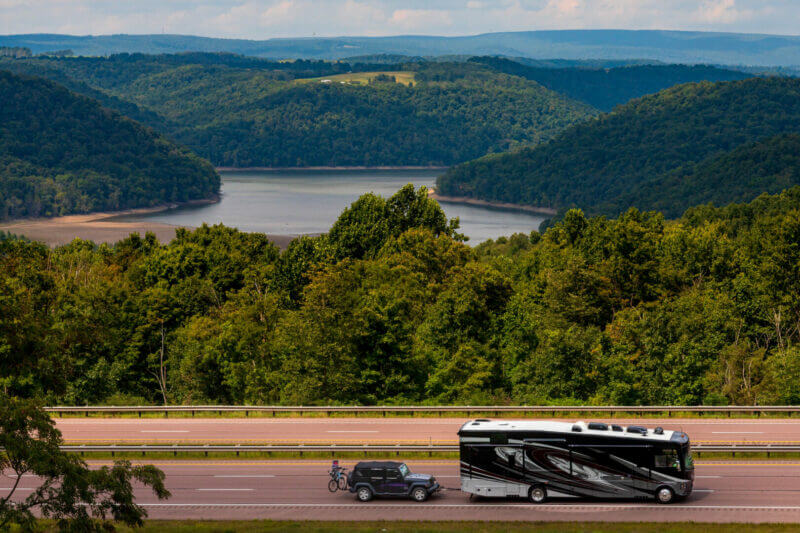Table of Contents Show
RV slides are the key to transforming a relatively narrow vehicle into a comfortable home. But surprisingly enough, many RVers don’t know much about this vital piece of their rig.
Read on as we take a look at everything you need to know about these space-expanding wonders.
What is an RV Slide?
If you’ve ever seen an RV or trailer with part of the side or back jutting out from the rest of the rig, you were looking at a slide. RV slides allow your rig to maintain a standard, safe width for driving when retracted but expand your narrow living space when parked.
Depending on your RV, you’ll generally have one to five slides. They expand your living room, kitchen area, or primary bedroom. Some rigs have full wall slides that allow an entire side of your RV to move in and out.
Electric Motor Versus Hydraulic Slides
RV slides use either an electric motor or hydraulics for power. Electric motor slides expand and retract using the power from the motor to run the gears needed to move the slide.
In contrast, hydraulic slides rely on hydraulic fluid pumped into or out of tubes. That powers a piston attached to your slide, allowing it to move in and out.
What Are the Different Types of RV Slides?
While many slides may appear similar to the naked eye, there are some crucial differences in their construction and style of operation.
Schwintek Slide System
How It Works: Schwintek slides operate on two sets of worm gear tracks, one on the ceiling and one on the floor. Two synchronized motors at each end of the slide drive the slide in and out.
Reliability: These are one of the more affordable slide systems, but Schwintek, unfortunately, has a bad reputation for reliability. The motors can fall out of sync or fail. However, when used properly, they can be a good deal.
Where You’ll See It Used: Schwintek systems work best on shallower slides and those without significant weight on them. These include closets, lightweight sofas or dinettes, or bedroom extensions.
Ease of Use: When functioning properly, Schwintek slides are very easy to use. When fully extended or retracted, the system will adjust itself to ensure it’s properly aligned.
Rack and Pinion System
How It Works: A rack and pinion system is a two-part mechanism that uses a toothed gear (the pinion) that runs along a rack mounted to the floor of your RV. This process pushes out or retracts the slide. In terms of weight, this is generally the heaviest RV slide type.
Reliability: As these slides rely on a very simple mechanism with few parts, rack and pinion systems are among the most reliable and affordable slides.
Where You’ll See It Used: Rack and pinion systems are the most common type of RV slide, meaning you’ll see it frequently in a variety of rigs.
Ease of Use: Rack and pinion systems are relatively easy to use but require lubrication to function properly over the long term.

Cable Driven System
How It Works: These systems use cables and pulleys driven by a motor to extend or retract your slide. In contrast to rack and pinion systems, cable-driven RV slides are among the lightest. You must install part of the mechanism inside your RV, potentially affecting your layout or furniture options.
Reliability: Cable-driven systems are very reliable. Besides a yearly visual inspection to ensure your cables aren’t fraying, they require no maintenance whatsoever.
Where You’ll See It Used: Because of their reliability and power, you’ll often find cable-driven RV slides on the longest or heaviest slideouts. They’re also popular because they can sit flush to the floor.
Ease of Use: You can operate the system manually fairly easily in the event of a slide motor failure.
Power Gear Slides
How It Works: Power gear slides operate similarly to rack and pinion systems but offer extra support to accommodate heavier slides. The slide system sits in the floor of the slide, creating a step-up into the slide, as opposed to one that’s flush with your rig’s floor.
Reliability: These RV slides tend to hold up over time.
Where You’ll See It Used: You’ll generally see power gear slide systems in similar situations as you’d see rack and pinion systems. However, power gear slides can accommodate more weight. Still, they’re the most uncommon of the major types of RV slides.
Ease of Use: Power gear slides are the fastest slides to extend and retract, which provides a bonus for those looking to set up or break down camp quickly.

How to Maintain Your RV Slides
With the diverse ways different slides operate, they all naturally have slightly different maintenance requirements. In every case, you should conduct a visual inspection of your RV slides at least once per year or more often if you use them frequently.
Additionally, you should lubricate the seals every few months using a rubber seal conditioner or silicone spray. Finally, lubricate the slide mechanism itself.
Understand Your RV Slides
While your RV slides may not be the flashiest aspect of your rig, they’re among the most important components. Understanding the type of slides you have and the basics of how each type operates can help you keep up with maintenance. Keep this in mind, and you’ll find the right slides to take your rig from narrow and small to spacious and comfortable. How often do you use your slides?






